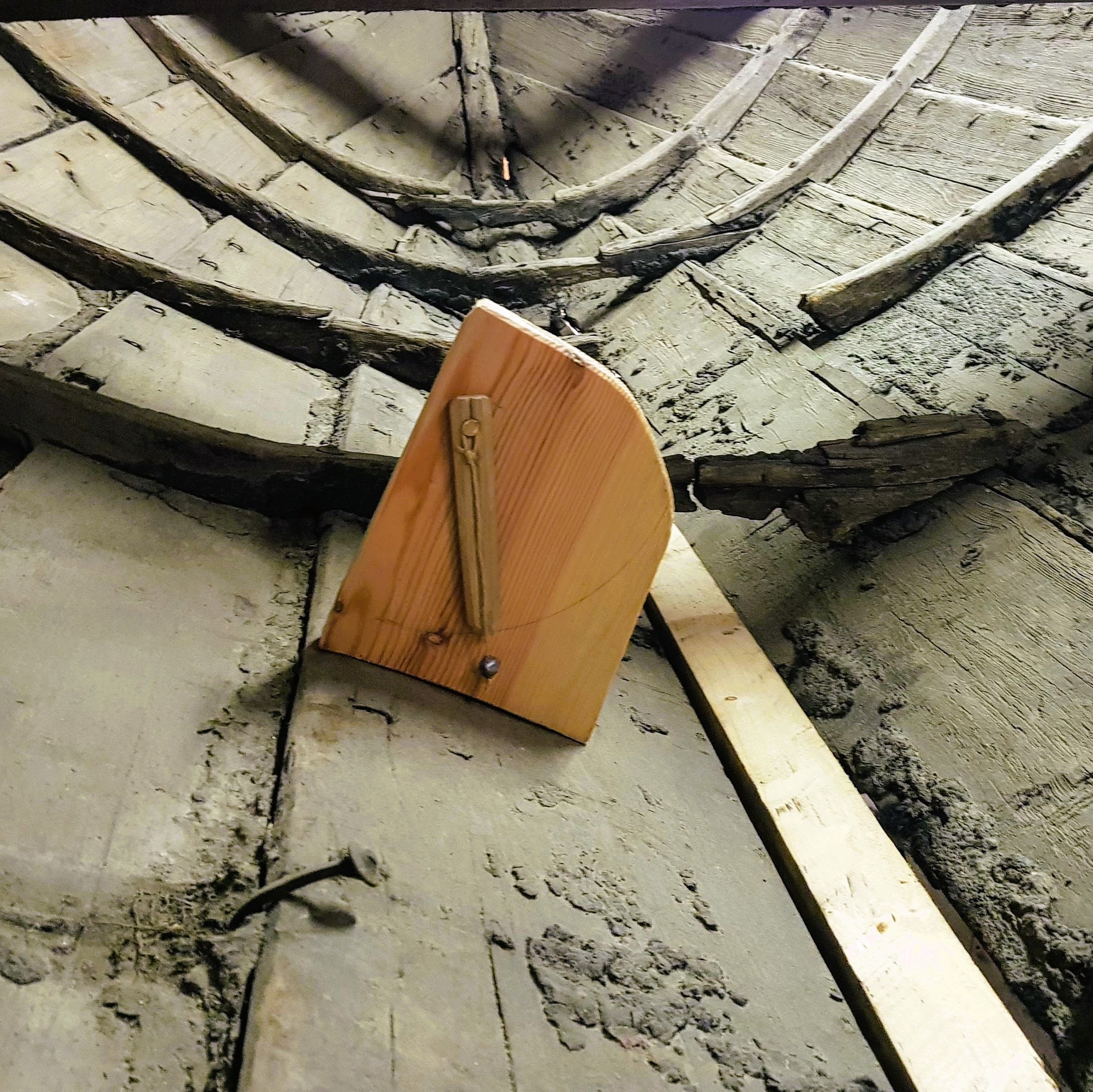Reconstructing the use of plumb level from a 19th century clinker boat tradition
DOI:
https://doi.org/10.7577/formakademisk.5413Emneord (Nøkkelord):
Boat building, Craft reconstruction, Boat surveys, Craft interpretation, Plumb levelSammendrag
Traditionally, vernacular Nordic clinker boats are built without plans or templates. The local boat traditions all have a system of design that was handed over from master to apprentice. In some local traditions, a simple plumb level was used to guide the boatbuilder. The plumb level was placed on the planks of the hull during the build to give them the right angles of inclination in certain parts of the hull. Knowledge of how to use this plumb level is still considered part of living, unbroken traditions in some areas. In some local traditions, however, there are no longer any living tradition bearers that have the knowledge of how this tool was used in the local context. In this contribution, I will discuss how this lost knowledge can be reconstructed using old artefacts as a source material. I am investigating the tradition of building vernacular, clinker-built boats called ‘öka’ for sailing and rowing. This specific boat building tradition was located in the 19th century Stockholm archipelago. The artefacts in this case are preserved boats built in the old tradition and preserved plumb levels from closely related traditions. A central question in this context is to locate the exact positions in the boat that were measured by the plumb level. Working with reverse engineering, the measuring can be performed on preserved boats, but the right places for measuring still must be located to reconstruct the knowledge of how and where to use the tool. Some preserved plumb levels have markings that can be used in this investigation to match the locations and angles in the preserved boats. In this contribution, I will also discuss the possibility of applying the traditional measuring methods used by the old boatbuilders in today´s surveys and reconstructions, not translating the craft object into a digital 3D model or a lines plan.
Referanser
Christensen, A. E. (1970). Båtbyggerverktøy og læreprosess. En ideskisse [Boat building tools and learning process. An idea sketch]. In Hasslöf, O. (Ed.) (1970). Sømand, fisker, skib og værft: introduktion til maritim etnologi (pp. 244–245). Rosenkilde og Bagger.
Dhoop, T., & Olaberria, J. (2015). Practical knowledge in the Viking Age: The use of mental templates in clinker shipbuilding. International Journal of Nautical Archaeology, 44(1), (pp. 95–110). https://doi.org/10.1111/1095-9270.12081
Eldjarn, G., & Godal, J.B. (1988–1990). Nordlandsbåten og Åfjordsbåten. Kjelland.
Godal, J. B. (2021). Geitbåten som system: Båtar i Møre og Romsdal [The goat boat as a system: Boats in Møre and Romsdal] (band 3). Fagbokforlaget.
Helland-Hansen, P., & Martinussen, A. O. (2014). Strandebarmaren: Småbåtbygging i Hardanger [Strandebarmaren: Small boat construction in Hardanger]. Kapabel.
Nordiska Museets Arkiv. (1928). Kustundersökningen [The coastal survey]. Nordiska Museet.
Planke, T. (1994). Sognebåten. Bygging, formforståelse og kunnskap [The Sognebåten. Construction, understanding of form and knowledge][Hovedfagsoppgave]. Universitety of Oslo.
Planke, T. (2001). Tradisjonsanalyse: En studie av kunskap og båter [Tradition analysis: A study of knowledge and boats][Doctoral dissertation]. Universitety of Oslo.
Planke, T. (2011). Båt og mønster [Boat and pattern]. In Fra kaupang til bygd (Årbok for Hedmarksmuseet). (pp. 173–195). Hedmarksmuseet.
Planke, T., & Stålegård, L. (2014). Barcode 6 fra vrak til rekonstruksjon. En utlegging av resultater og metoder [Barcode 6 from wreckage to reconstruction. An exposition of results and methods]. In E. S. Koren, and F. Kvalø. (Eds), Hundre år over og under vann: Kapitler om maritim historie og arkeologi i anledning Norsk Maritimt Museums hundreårsjubileum (pp. 359–400). Novus Forlag.
Törnroos, B. (1968). Båtar och båtbyggeri i Ålands östra skärgård 1850-1930 [Boats and boat building in Åland's eastern archipelago 1850-1930]. Sjöhistoriska museet vid Åbo akademi.
Törnroos, B. (1978). Öståländska fiskebåtar förr och nu [Eastern Åland fishing boats past and present]. Jakobstad:
UNESCO. (2023, June 09). Nordic Clinker Boat Traditions. https://ich.unesco.org/en/RL/nordic-clinker-boat-traditions-01686
Økland, K. M. (2016). Oselvar: Den Levande båten [Oselvar: The Living Boat]. Skald.

Nedlastinger
Publisert
Hvordan referere
Utgave
Seksjon
Lisens
Opphavsrett 2023 Fredrik Leijonhufvud

Dette verket er lisensiert under Creative Commons Attribution-NoDerivatives 4.0 International License.
- Forfatteren(e) beholder sin opphavs- og kopieringsrett til eget manuskript, men gir tidsskriftet varig rett til 1) å fremføre manuskriptet for offentligheten i den opprinnelig publiserte digitale form, og 2) å registreres og siteres som første publisering av manuskriptet.
- Forfatteren må selv forvalte sine økonomiske kopieringsrettigheter overfor eventuell tredjepart.
- Tidsskriftet gir ingen økonomisk eller annen kompensasjon for innsendte bidrag, medmindre det er gjort særskilt avtale om dette med forfatteren(e).
- Tidsskriftet plikter å arkivere manuskriptet (inklusive metadata) i den opprinnelig publiserte digitale form, i minst ett dertil egnet åpent tilgjengelig langtidsarkiv for digitalt materiell, som for eksempel i de norske universitetenes institusjonsarkiv innen rammen av NORA-samarbeidet.
Verket vil bli publisert OpenAccess med en Creative Commons 4.0-lisens som tillater alle å lese, dele og tilpasse innholdet, også kommersielt, under lisensvilkårene:
Dette verket må tilskrives/ krediteres på riktig måte, en lenke må gis til CC-BY 4.0-lisensen, og endringer som er gjort må angis på en rimelig måte, men ikke på noen måte som antyder at lisensgiveren støtter deg eller din bruk.



